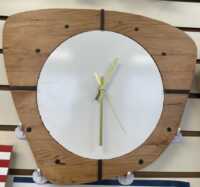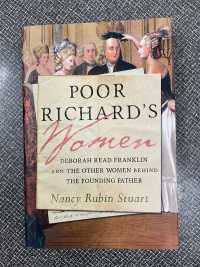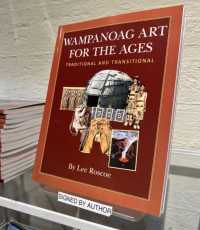-

 This vintage John F. Kennedy scarf, crafted in 1965 by Maruzzella & Co., is a remarkable piece for history enthusiasts and collectors alike. Made of rayon and measuring 31" x 30", this authentic artifact features a striking design, with the edges bordered by the U.S. flag on all four sides. Manufactured in Japan, the scarf was originally sold at the 1965 World's Fair in New York, making it a rare and treasured memento of a significant era. Original and authentic.
This vintage John F. Kennedy scarf, crafted in 1965 by Maruzzella & Co., is a remarkable piece for history enthusiasts and collectors alike. Made of rayon and measuring 31" x 30", this authentic artifact features a striking design, with the edges bordered by the U.S. flag on all four sides. Manufactured in Japan, the scarf was originally sold at the 1965 World's Fair in New York, making it a rare and treasured memento of a significant era. Original and authentic. -
 This painted whale, crafted by Bob Bennett, is made from kitchen shelving reclaimed during the historic restoration of President and Mrs. Kennedy’s former Hyannis Port home, now the residence of State Senator Ted Kennedy and his wife, Kiki. Each piece is a unique, handcrafted art item, and comes with a Certificate of Authenticity.
This painted whale, crafted by Bob Bennett, is made from kitchen shelving reclaimed during the historic restoration of President and Mrs. Kennedy’s former Hyannis Port home, now the residence of State Senator Ted Kennedy and his wife, Kiki. Each piece is a unique, handcrafted art item, and comes with a Certificate of Authenticity. -
 Inspired by the power of her vintage letterpress, local Cape Cod artist and architect Mary-An Agresti created a stunning collage encouraging everyone to "Go Vote with Love!". Her artwork is currently featured at the Cultural Center in Yarmouth's "Unfinished Democracy" exhibit. Mary-An is donating her profits to the Center for Common Ground's Reclaim Our Vote campaign. Free shipping!
Inspired by the power of her vintage letterpress, local Cape Cod artist and architect Mary-An Agresti created a stunning collage encouraging everyone to "Go Vote with Love!". Her artwork is currently featured at the Cultural Center in Yarmouth's "Unfinished Democracy" exhibit. Mary-An is donating her profits to the Center for Common Ground's Reclaim Our Vote campaign. Free shipping! -
 This unique and modern clock, crafted by Bob Bennett, includes wood salvaged during the historic restoration of President and Mrs. Kennedy’s former Hyannis Port home—now the residence of State Senator Ted Kennedy and his wife, Kiki. This distinctive timepiece carries a special legacy, connecting the elegance of natural wood with a piece of American history. A Certificate of Authenticity is included.
This unique and modern clock, crafted by Bob Bennett, includes wood salvaged during the historic restoration of President and Mrs. Kennedy’s former Hyannis Port home—now the residence of State Senator Ted Kennedy and his wife, Kiki. This distinctive timepiece carries a special legacy, connecting the elegance of natural wood with a piece of American history. A Certificate of Authenticity is included.



